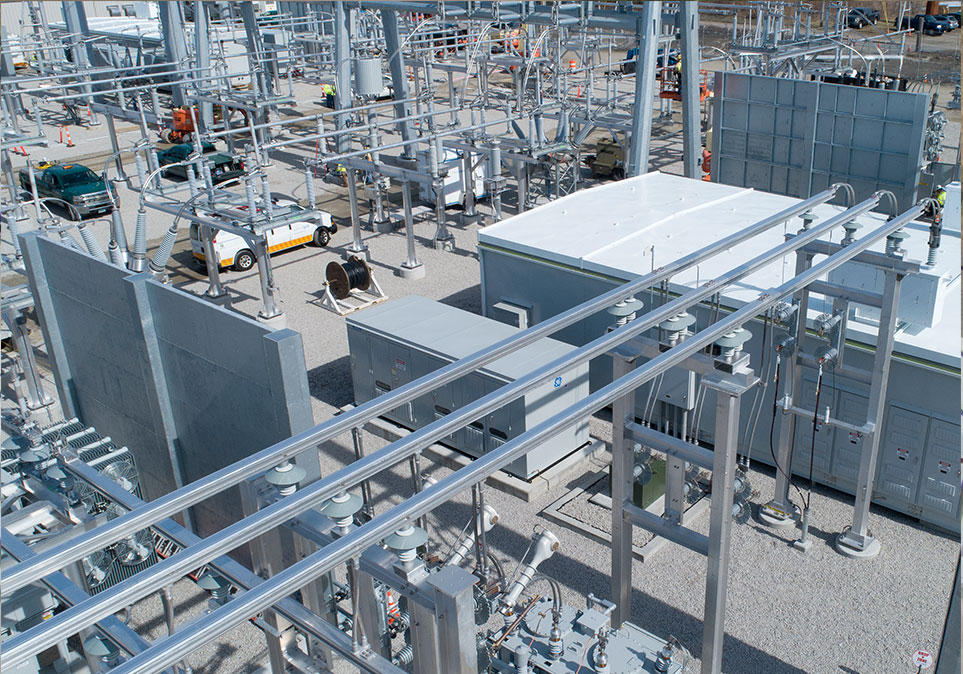Critical infrastructure protection (CIP) aims to manage risk, protect essential services, and safeguard the lifeblood of society in the event of a disaster or malicious attack. CIP is a strategic framework for protecting critical infrastructure from cyber and physical threats. Hence, every organization needs functioning critical infrastructure protection. In this blog post, we will introduce critical infrastructure protection and explain why it’s important. We will also outline the principles of CIP that you can use as an initial checklist when establishing your CIP program or with the help of fire barrier services.
What is Critical Infrastructure Protection?
Critical infrastructure protection (CIP) refers to the safeguarding of systems and assets that are essential for critical services. These critical services could be public utilities, national defense functions, healthcare, or even water, food, and energy supplies. It’s important to recognize that CIP isn’t just about physical infrastructure. It also includes computer networks and cyber-assets. Organizations within CIP have a wide range of responsibilities that can differ depending on the level of risk identified in their sector. These responsibilities include conducting risk assessments, using risk-based priorities, creating emergency response plans, and planning for continuity of operations.
Why Is Critical Infrastructure Protection Important?
The importance of critical infrastructure protection is fairly self-evident when we look at the definition. Essential services like clean water, healthcare, and a reliable energy grid are crucial for any modern society. If any of these services were to be interrupted for even a short period, the results could be catastrophic. There are three key reasons why CIP is important.
First, essential services are highly vulnerable to disruption. With the rise of sophisticated cyber threats, it is more important than ever to protect these critical services.
Secondly, even when these services are not directly disrupted, they often have knock-on effects on other services. For example, the power grid is connected to a range of other systems that rely on electricity. So, even if the power grid isn’t damaged, a cyber attack on other systems could still cause blackouts. Finally, society relies on these critical services in every aspect of daily life. If these services were disrupted, it would have a devastating impact on the general population.
Core Principles of Critical Infrastructure Protection
There are six core principles that form the foundation of a robust CIP strategy. They are; awareness, prevention, detection, response, recovery, and transferability. Let’s take a closer look at each of these core principles.
Awareness
Awareness is an ongoing process that seeks to understand the threats facing an organization and its sectors. This process seeks to understand the risks, threats, and vulnerabilities associated with these systems.
Prevention
One of the best ways to protect against disaster is to stop it from happening in the first place. Prevention goes beyond the typical computer security measures also to encompass physical security, which could include the transfer of goods and services.
Detecting
When disaster does strike, it is important to detect it as quickly as possible. This is one of the best ways to mitigate the impact of a disaster. The most effective detection strategies go beyond the computer system to include all the systems within the organization.
Response
The response to a disaster or malicious attack must be coordinated, well-planned, and executed as efficiently as possible. Response activities include the mobilization of people and resources to deal with the immediate impact of a disaster.
Recovery
Disaster recovery focuses on returning a system or service back to its original operating state as quickly as possible. This includes restoring computer systems, business functions, and physical infrastructure.
Transferability
Transferability is all about making sure the lessons learned from one situation can be applied to future situations.
More Information on Critical Infrastructure Protection
Organizations within CIP have a wide range of responsibilities that can differ depending on the level of risk identified in their sector. These responsibilities include conducting risk assessments, using risk-based priorities, creating emergency response plans, and planning for continuity of operations.
3 Steps to Establishing a CIP Program
There’s no standard approach to implementing a critical infrastructure protection program. However, there are some steps you can follow to get started. These steps include assessing your current situation, obtaining executive buy-in, and establishing an implementation plan. Let’s take a look at each of these steps in more detail.
Assessing Your Current Situation
Before you can implement new processes and procedures, you need to understand your current situation. You need to ask yourself questions like; What type of cyber security posture do you have in place today? What types of physical security are in place? The answers to these questions will serve as the foundation of the critical infrastructure protection program for your organization.
Obtaining Executive Buy-In
Once you have a clear picture of the state of your organization, you need to gain executive buy-in. This means that the executives within your organization need to understand the need for a comprehensive CIP program. Educate everyone about the Critical Infrastructure Protection program and get more ideas and opinions. Also, your team needs to understand how it will be implemented and how it will impact their day-to-day activities.
Establishing an Implementation Plan
Once you have gained executive buy-in, you can move on to developing an implementation plan. This plan should include a roadmap for how you will implement your CIP program. You should also include a list of responsibilities and a timeline for each step in the process. When you implement your CIP plan, it’s important to monitor and analyze your progress. You should check if everything is going as planned and also check if new challenges are cropping up. If new challenges are surfacing, you’ll need to make some adjustments as required. Also, when implementing your plan, endeavor to keep your team and executives informed.
In summary, the most effective CIP programs are those that are incorporated into the organization’s strategic planning and are mandated at the highest levels of the organization. To learn more about CIP, you can check out our website; https://firebarrierexperts.com/.
Sinisi Solutions
732-232-2100




